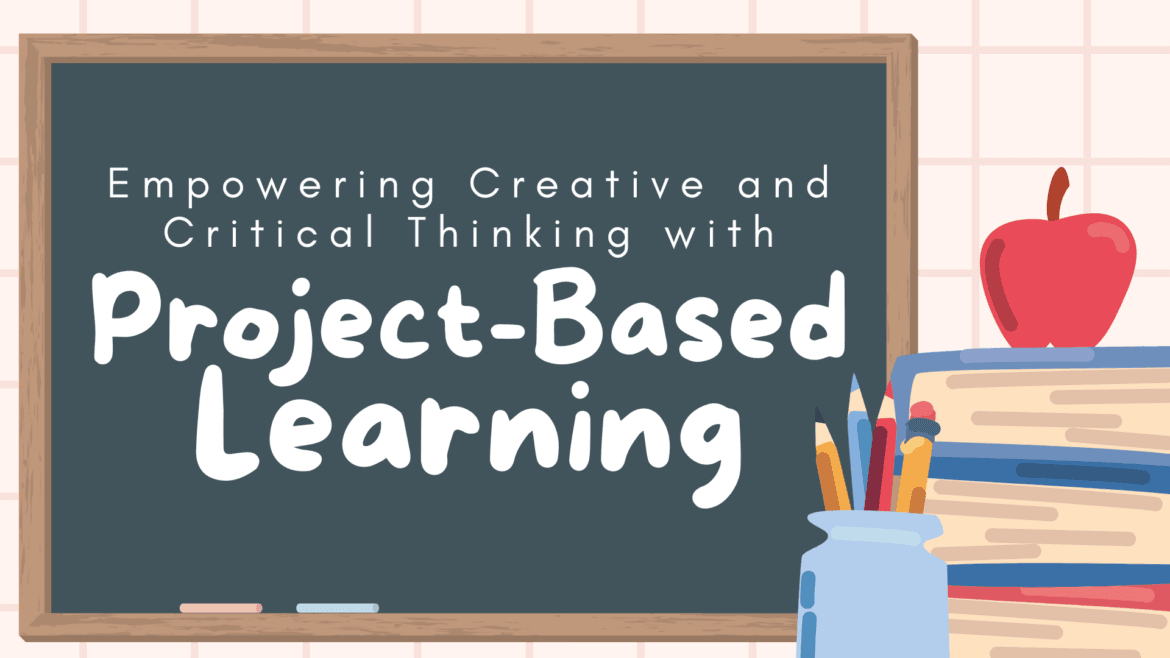Why Project-Based Learning is the Future of Education in Innovative Schools | SSRVM TRUST
Introduction
Education is evolving, and innovative schools are at the forefront of this transformation. Traditional rote learning methods are being replaced by project-based learning (PBL), a dynamic approach that enhances students' problem-solving skills, creativity, and collaboration. This shift is not just a trend; it is the future of education.
In this article, we’ll explore why project-based learning is essential in modern education and how innovative schools are leading the way.
Project-Based Learning: A Paradigm Shift in Education
What is Project-Based Learning?
Project-based learning (PBL) is a teaching methodology where students gain knowledge and skills by working on meaningful projects over an extended period. Instead of passively absorbing information, students actively engage in solving real-world problems, conducting research, and presenting their findings.
How PBL Differs from Traditional Learning
Project-based learning (PBL) differs significantly from traditional learning methods in several ways. While traditional learning relies heavily on memorization and repetition, PBL focuses on a hands-on, inquiry-based approach, where students actively engage with the subject matter.
In a conventional classroom, students often take on the role of passive learners, absorbing information from textbooks and lectures. In contrast, PBL encourages students to be active problem-solvers, working collaboratively on real-world projects.
Assessment methods also vary between the two approaches. Traditional education typically evaluates students through exams and standardized tests, whereas PBL assessments are based on presentations, reports, and project outcomes, measuring students' ability to apply knowledge in practical settings.
Furthermore, innovative schools that implement PBL ensure a stronger real-world connection, where students learn by solving authentic problems rather than just theoretical exercises. This fundamental shift in learning methodology prepares students for future careers by enhancing critical thinking, creativity, and collaboration skills—key attributes required in today's fast-changing world.
The Benefits of Project-Based Learning in Innovative Schools
1. Enhancing Critical Thinking and Problem-Solving
One of the primary benefits of PBL is that it pushes students to think critically and solve complex problems. Unlike traditional education, where solutions are predefined, PBL allows students to explore multiple possibilities, analyze different outcomes, and make informed decisions.
2. Promoting Creativity and Innovation
Students in innovative schools are encouraged to think outside the box. PBL fosters an environment where students can brainstorm, experiment, and iterate on their ideas. This approach helps nurture creativity, which is a critical skill in today’s competitive world.
3. Developing Collaboration and Communication Skills
In PBL, students often work in teams to complete projects. This collaborative environment teaches them teamwork, leadership, and communication—skills that are invaluable in both academic and professional settings.
4. Real-World Application of Knowledge
One of the biggest criticisms of traditional education is its lack of real-world applicability. Innovative schools bridge this gap by integrating PBL into their curriculum, allowing students to apply theoretical knowledge in practical scenarios,and preparing them for real-life challenges.
5. Increased Engagement and Motivation
When students are actively involved in their learning process, they tend to be more engaged and motivated. PBL makes education exciting, as students work on projects that resonate with their interests and real-life situations.
How Innovative Schools Are Implementing Project-Based Learning
1. Hands-on STEM Projects
Many innovative schools incorporate PBL into Science, Technology, Engineering, and Mathematics (STEM) education. Students work on robotics, coding, and engineering projects that allow them to solve real-world problems using technology.
2. Community-Based Learning Initiatives
Several schools encourage students to engage in community-driven projects where they work on environmental sustainability, social issues, or public health awareness programs, fostering a sense of responsibility and civic engagement.
3. Entrepreneurship and Business Simulations
Some innovative schools integrate entrepreneurial thinking into their curriculum, where students create business models, develop products, and pitch ideas to real investors, preparing them for future careers.
4. Arts and Humanities Integration
PBL is not just limited to STEM fields. Many innovative schools use PBL in the arts, literature, and social sciences, encouraging students to create art installations, write research papers, and conduct historical investigations.
The Future of Education: Why Schools Must Embrace PBL
As the world continues to evolve, so must education. Innovative schools that adopt PBL equip students with the necessary skills for the future, such as adaptability, digital literacy, and problem-solving. The traditional methods of education, which focus heavily on memorization, are no longer sufficient.
Governments, educators, and parents must recognize the importance of project-based learning and advocate for its widespread implementation. Schools that fail to adapt to this modern approach may find themselves lagging in preparing students for the real world.
Conclusion
Project-based learning is revolutionizing education, and innovative schools are leading the way in implementing this transformational methodology. By fostering critical thinking, creativity, and real-world problem-solving skills, PBL ensures that students are not just passive learners but active contributors to society.
If we want to prepare our children for the future, we must embrace project-based learning as the new standard in education. Schools, educators, and parents must work together to integrate PBL into mainstream education and create a future-ready generation.
FAQs
1. How does project-based learning improve student engagement?
Ans - Project-based learning enhances engagement by involving students in real-world problem-solving, making learning more interactive and meaningful.
2. Why are innovative schools adopting project-based learning?
Ans - Innovative schools recognize that traditional methods no longer prepare students for modern careers. PBL fosters critical thinking, collaboration, and hands-on learning.
3. Can project-based learning be applied to all subjects?
Ans - Yes! PBL is effective in STEM, arts, humanities, and social sciences, making it a versatile educational approach.
4. Does project-based learning improve academic performance?
Ans - Studies show that students in PBL environments outperform their peers in critical thinking, creativity, and problem-solving assessments.
5. How can parents support project-based learning at home?
Ans - Parents can encourage curiosity by engaging children in hands-on projects, real-world problem-solving, and interactive learning experiences.
6. What are some examples of project-based learning activities?
Ans - Examples include science experiments, business simulations, environmental projects, coding challenges, and historical research.

